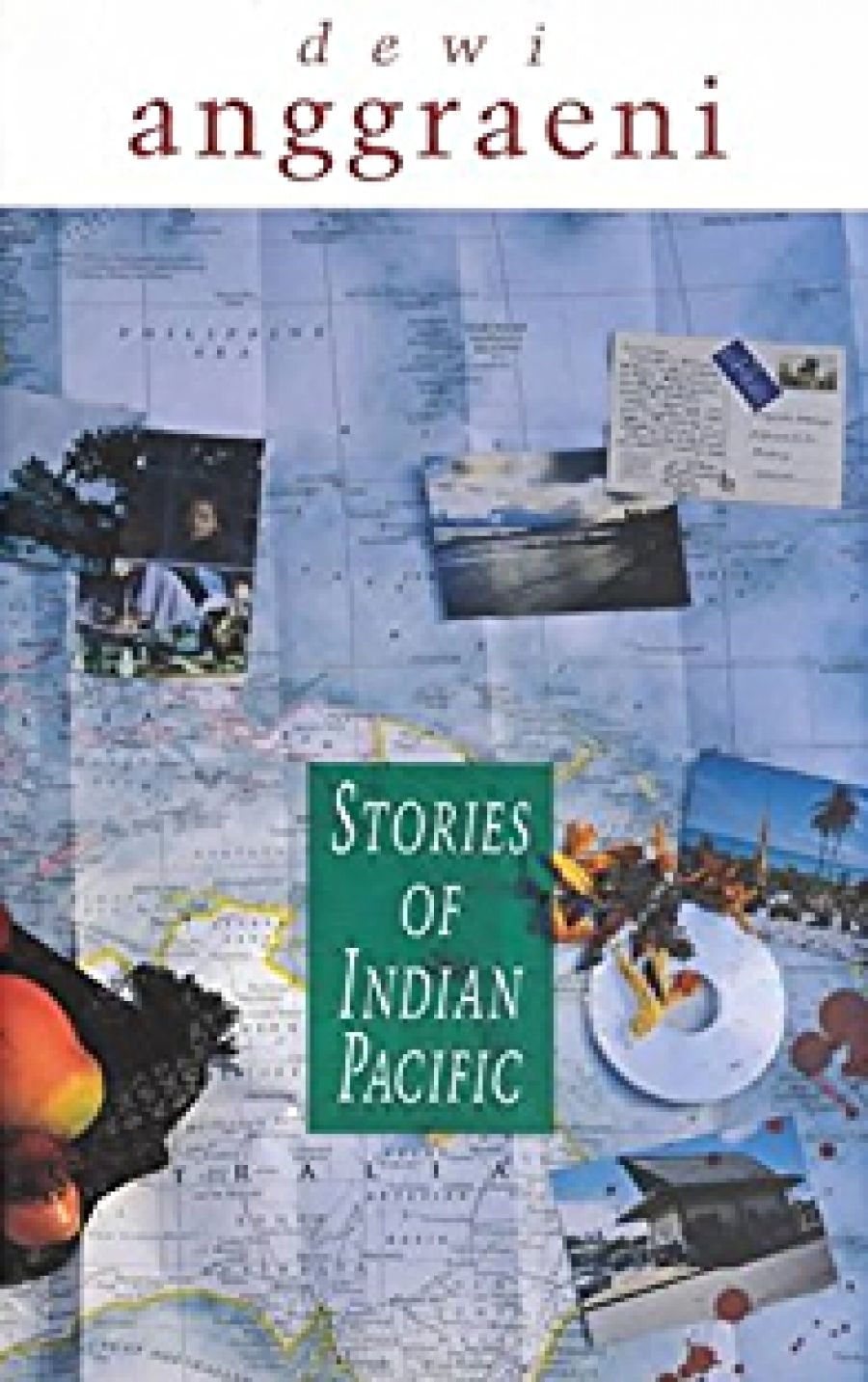
- Free Article: No
- Contents Category: Short Stories
- Review Article: Yes
- Online Only: No
- Custom Highlight Text:
Works of Indonesian fiction, whether set in Indonesia or written by Indonesians, are still comparatively rare in Australia, and can therefore be difficult to read sensitively. In her collection of three novellas set in New Caledonia, Adelaide/Bandung and Bali, Melbourne writer Dewi Anggraeni attempts to explore the ground between cultures and the way people straddle cultures and come to an accommodation and understanding of each other. She is not always successful.
- Book 1 Title: Stories of Indian Pacific
- Book 1 Biblio: Indra, $16.95pb
‘Uncertain Step’, perhaps drawing on Anggraeni’s own experiences, is an exploration of how an Indonesian woman copes with migrating to Australia. This is the strongest of the three novellas, with insights that make the characters real. Here the lack of detailed description works with the story, demonstrating the incomprehension of the new migrant and the unfamiliar visitors to Indonesia. Anggraeni gives us the camaraderie of women from different backgrounds: the newlywed Aryani discussing her spouse, Steve, with his ex, Ann; sister-in-law Sharon; and the nonverbal understanding of sexual manipulation, ‘the temporary power of wnmen over men’; which flashes between Aryani and a belly dancer at a restaurant.
I found the other two stories less convincing. It could be argued they build on aspects of traditional Indonesian (especially Javanese and Balinese) storytelling, highly rhetorical with characters representing ideas rather than fully grounded individuals. These traditional stories still have currency when it is not always possible to speak one’s mind directly, and are used by the Balinese poet-performer Nyoman Sumadri in ‘Crossroads’ (a thinly disguised W. S. Rendra) to render his contemporary political criticisms.
This is a useful approach to ‘To drown a cat’, a story about revolution in New Caledonia and by inference Indonesia (the explicit Indonesian content in this story is limited to a few references to the descendants of Javanese who live on the island). There’s real scope for character development in the moral dilemmas faced by reluctant revolutionaries who get dragged ever deeper into confrontation and who compromise their own principles in carrying through on their beliefs. But the words are flat, their speech stilted, which made it hard for this reader, at least, to care about them or their ideas. I was completely lost by the potboiler ending where all the loose ends come together on the last page.
‘Crossroads’ provides the Balinese perspective missing in Inez Baranay’s The Edge of Bali, as well as an unironical view of an idealistic Australian tourist who feels somehow or other closer to the ‘real’ Bali. There’s a cute dig at the Indonesian arts scene, with a house guard called Marzuki bearing the same name as the original Jakarta Performing Arts Centre. But, again, it fails to rouse me. Justin’s insights and responses to a shadowy Bali echo the questing seriousness and the unintended pomposity of Larry in Somerset Maugham’s The Razor’s Edge. That may have been insightful enough forty years ago, but not anymore; 200,000 Australians visit Bali every year.
Stories of Indian Pacific may be an attempt to overcome what one character articulates as ‘the stereotype thinking of a racist. Why ... take for granted that you can make out the collective behaviours of a certain people? ... Why be so simplistic?’ It is a noble objective. In this collection Anggraeni’s writing works best, and she comes closest to realising this, when she avoids the granddiloquent and embraces the personal.


Comments powered by CComment